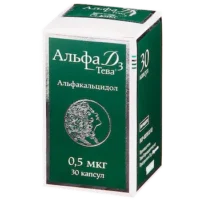Description
Adrenaline-D (Epinephrine) Ampoules 0.18% 1ml. №10
Ingredients
- Active ingredient: Epinephrine 0.18%
- Inactive ingredients: Sodium chloride, Water for injection
Dosage
Dosage: The usual dose is 0.3 to 0.5 mL (0.54 to 0.9 mg) injected subcutaneously or intramuscularly. Repeat every 5 to 10 minutes if necessary.
Indications
Indications: Adrenaline-D is indicated for the emergency treatment of severe allergic reactions (anaphylaxis) to insect stings or bites, foods, drugs, and other allergens.
Contraindications
Contraindications: Do not use in patients with known hypersensitivity to epinephrine or any of the other ingredients.
Directions
Directions: Administer Adrenaline-D promptly in the event of a serious allergic reaction. Seek medical help immediately after administration.
Scientific Evidence
Epinephrine is a potent sympathomimetic agent that acts on both alpha and beta-adrenergic receptors. It works rapidly to reverse the symptoms of anaphylaxis by constricting blood vessels, increasing heart rate, and opening up the airways. Several studies have demonstrated the effectiveness of epinephrine in the treatment of anaphylaxis, with prompt administration being crucial for a positive outcome.
Additional Information
Adrenaline-D is a life-saving medication that should be readily available for individuals at risk of severe allergic reactions. It is essential to educate patients, caregivers, and healthcare providers on the proper administration techniques and the importance of seeking immediate medical attention following its use.
- Epinephrine is considered the first-line treatment for anaphylaxis due to its rapid onset of action and ability to reverse the potentially life-threatening symptoms associated with severe allergic reactions.
- Compared to other medications used in the management of anaphylaxis, epinephrine remains the most effective and reliable option. Its ability to target multiple physiological pathways involved in an allergic reaction makes it a cornerstone therapy in emergency situations.





